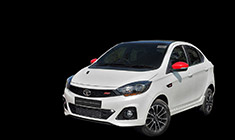News
PPF, ceramic or graphene: What's best for a white Mahindra XEV 9e
Will it really protect against anything more than the lightest swirls? Will swirl marks from washing still appear relatively easily?
BHPian shinigami_xev recently shared this with other enthusiasts:
Hi BHPians,
TLDR; PPF, Ceramic/graphene or no protection for the car? Specially piano black exterior and interiors.
I recently took delivery of my brand new Mahindra XEV 9e in Everest White and, like many, I'm navigating the world of paint protection. I'm hoping to tap into the collective wisdom of this community as I'm quite confused after speaking with multiple detailers who have offered differing advice.
My goal is to protect the car effectively, focusing on a few key areas:
- Everest White Paintwork: Keeping the white looking pristine and protecting it from swirls and minor scratches.
- Exterior Piano Black Cladding: These are large sections on the XEV 9e and seem highly prone to scratches, swirl marks, and potentially stone chips due to their location and finish. This is a major area of concern.
- Interior Piano Black Trim: The dashboard and console areas with the glossy black finish are scratch magnets, and I'd like to minimize damage here if possible.
(Note: For the leather seats, I think I've found a suitable periodic treatment, so my main query is about the paint and plastic trims.)
Here are the options I've been presented with and my associated doubts:
Option 1: Graphene / Ceramic Coating Everywhere (Full Exterior + Interior Piano Black)
Detailer Claims: Some suggest Graphene (or Graphene Matrix) coatings are more durable and harder than standard ceramic, lasting longer.
My Doubts/Concerns based on feedback:
- Will it really protect against anything more than the lightest swirls? Unlikely to help with stone chips on the cladding.
- Will swirl marks from washing still appear relatively easily, especially on the black cladding?
- Will debris hitting the cladding still cause noticeable scratches despite the coating?
- For the interior, I'm told scratches will still happen and cannot be buffed out on coated plastic due to heat sensitivity during buffing. Is this true?
Option 2: Full PPF (Full Exterior + Interior Piano Black)
Detailer Claims: Offers the best physical protection against scratches, stone chips, etc.
My Doubts/Concerns based on feedback:
- Yellowing: Major concern, especially on a white car. How bad is this with modern films? I was told that the car paint yellows slightly anyway, and PPF yellows less, making it a "net win" – sounds like marketing spin?
- Repair Hassle/Cost: If a panel (especially the large cladding) gets dented or needs repair, I'd have to pay for PPF removal, then panel repair/replacement, then PPF reapplication. This seems incredibly expensive and complex. Some suggest replacing the cladding panel might even be cheaper than the PPF hassle.
- Interior Application: Concerns about water usage during install potentially affecting electronics (even if a small risk?). Also heard PPF edges might lift over time on interior gloss plastics.
Option 3: Hybrid Approach (My Potential Idea)
- The Idea: Apply Graphene/Ceramic Coating on the white painted surfaces. Apply PPF only on the vulnerable exterior Piano Black Cladding (potentially a more budget-friendly PPF specifically for this high-impact area).
- Potential Pros: Balances protection where needed most (cladding) with cost-effectiveness and ease of maintenance (coating on paint). Avoids major yellowing concerns on the main body.
- Potential Cons: Managing two types of protection. Need to ensure even the "cheaper" PPF on cladding is of decent quality.
Cost Context (Approximate Quotes Received):
- Full Graphene/Ceramic: ~₹35k - ₹40k
- Full PPF: Ranges wildly from ~₹70k (basic) to ~₹2 Lakh+ (premium brands like Llumar)
- Hybrid (Est. Graphene on paint + Basic PPF on cladding): Might roughly total ~₹60k - ₹70k? (e.g., ~20k partial coating + ~40k partial PPF)
My Key Questions for the Community:
- Is there a significant real-world difference in durability/protection between good Ceramic and "Graphene" coatings, or is it mostly marketing?
- For those with white cars and PPF: How has yellowing been over 2-3+ years with modern films? Which brands fare better?
- Has anyone dealt with panel repairs on a PPF-wrapped car? Was the cost/hassle of PPF removal/reapplication substantial, especially for plastic cladding?
- What's the most practical way to protect interior piano black? Is PPF worth the potential hassle, or is careful use the only real answer? Does coating offer any meaningful protection there?
- Considering my specific concerns (cladding vulnerability, interior scratches, white paint), which approach (Full Coat, Full PPF, Hybrid) seems most logical to experienced members?
I'd be grateful for any insights, real-world experiences (good and bad!), and advice, especially from long-term users or professional detailers on the forum who can cut through the noise.
Check out BHPian comments for more insights and information.
News
Graphene-infused ceramic coating on my Hyundai Creta: 3-year update
The shine is still there and I am satisfied with the coating and the protection it has offered.
BHPian Artyom recently shared this with other enthusiasts:
Update
- Over 3 years since the coating was done and I am glad to report the coating is holding up so far.
- During this duration, I have got around 12 FULL washes from a washing center nearby.
- I used to take my shampoo and MF towels for them to use.
- Along with that, I performed a few water less washes using Optimum ONR + Carpro EchO2.
- The shine is still there and protection is still at par considering it's been 3 years since the coating was done.
- The coating has taken a beating mostly on the bonnet due to obvious reasons but still it's at an acceptable level.
- There are swirl marks all over the body but not to the point where it can be considered as an eye-sore.
- Overall I am satisfied with the coating and the protection it has offered.
- The company claims 4 years and considering it has held well so far I think it was money well spent.
Today I got a full wash done and applied IGL Enhancer which is their Quick Detailer
Now let the clicks do the talking.






Check out BHPian comments for more insights and information.
News
Pics: Skoda Slavia gets a Graphene coating & dechroming of parts
Initially, I had a plan to get the Graphene coating from Schimmer, Kochi straight after taking delivery, but then I had to travel to Trivandrum before that could happen.
BHPian dragontailonfire recently shared this with other enthusiasts.
Its been just about a month that I took delivery of my Skoda Slavia 1.5 TSI MT and I have been thoroughly enjoying the experience.
I finally got the Graphene coating done, and also dechromed few of the bits on the car. Got both both from Schimmer, Kochi.
From the detailing studio:
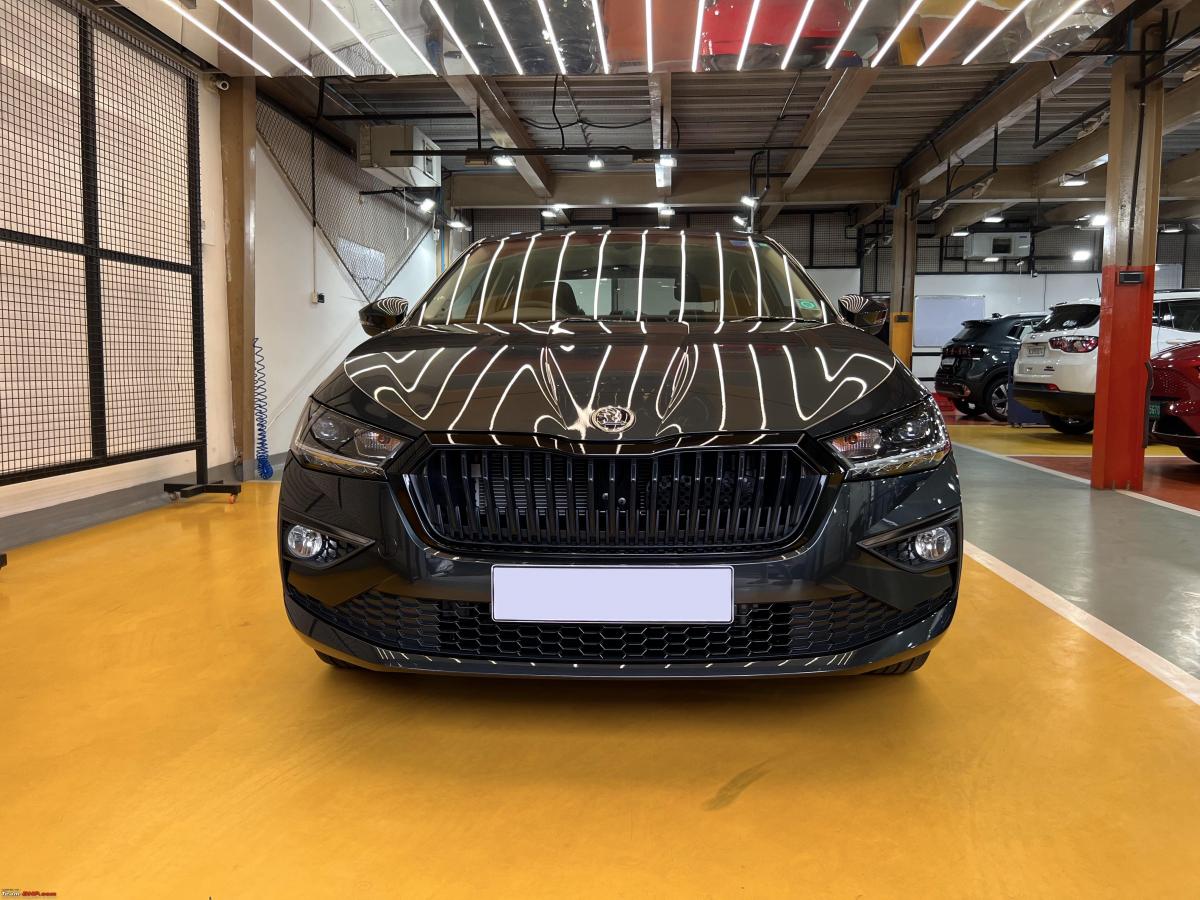

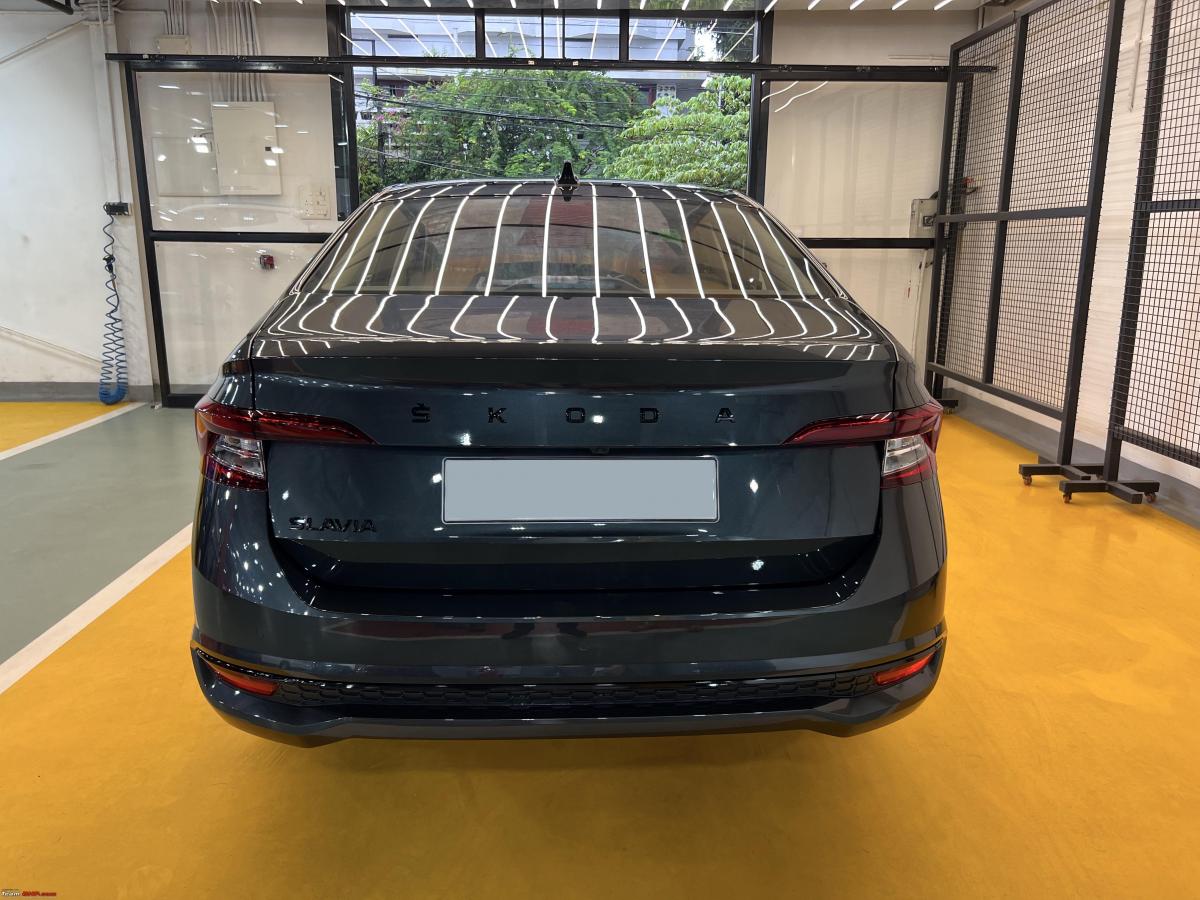
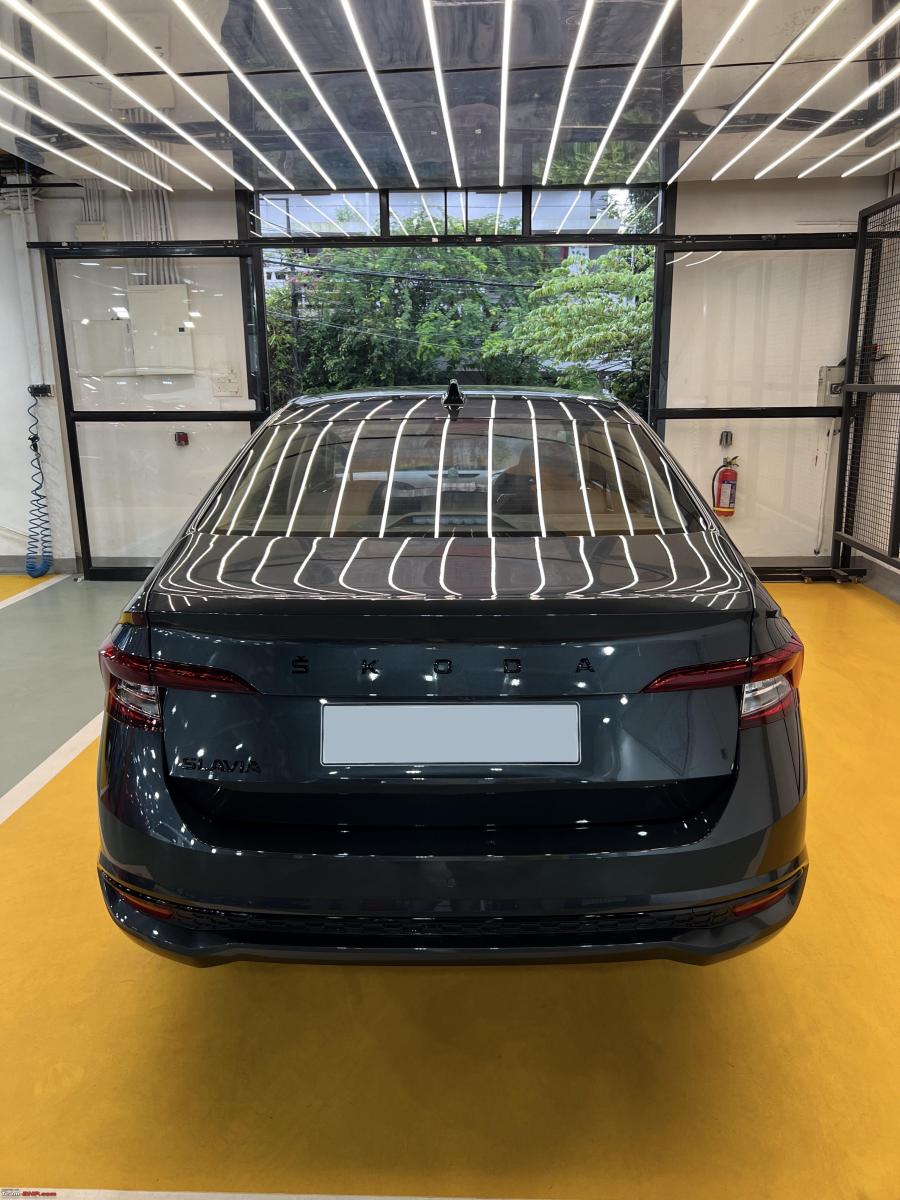
Out in the rain:

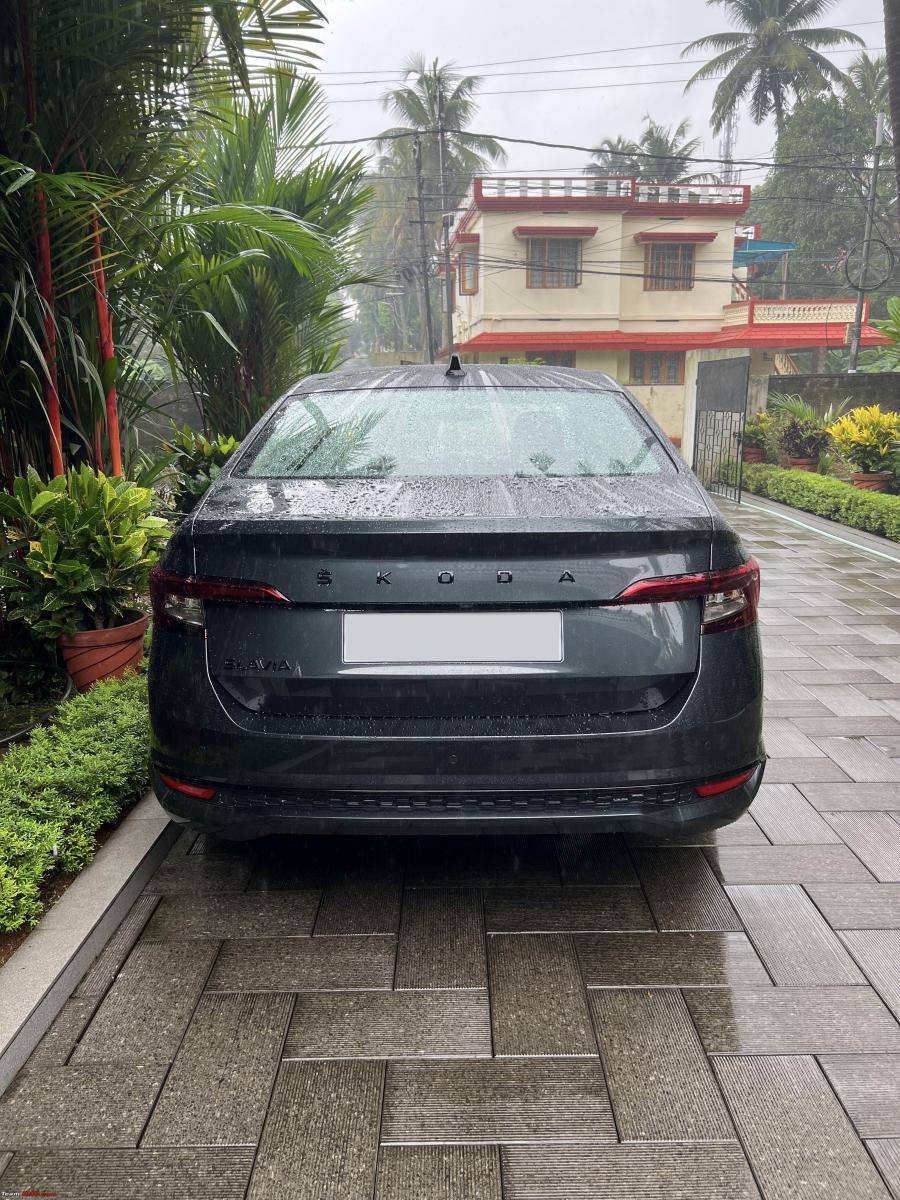
Really shiny now:

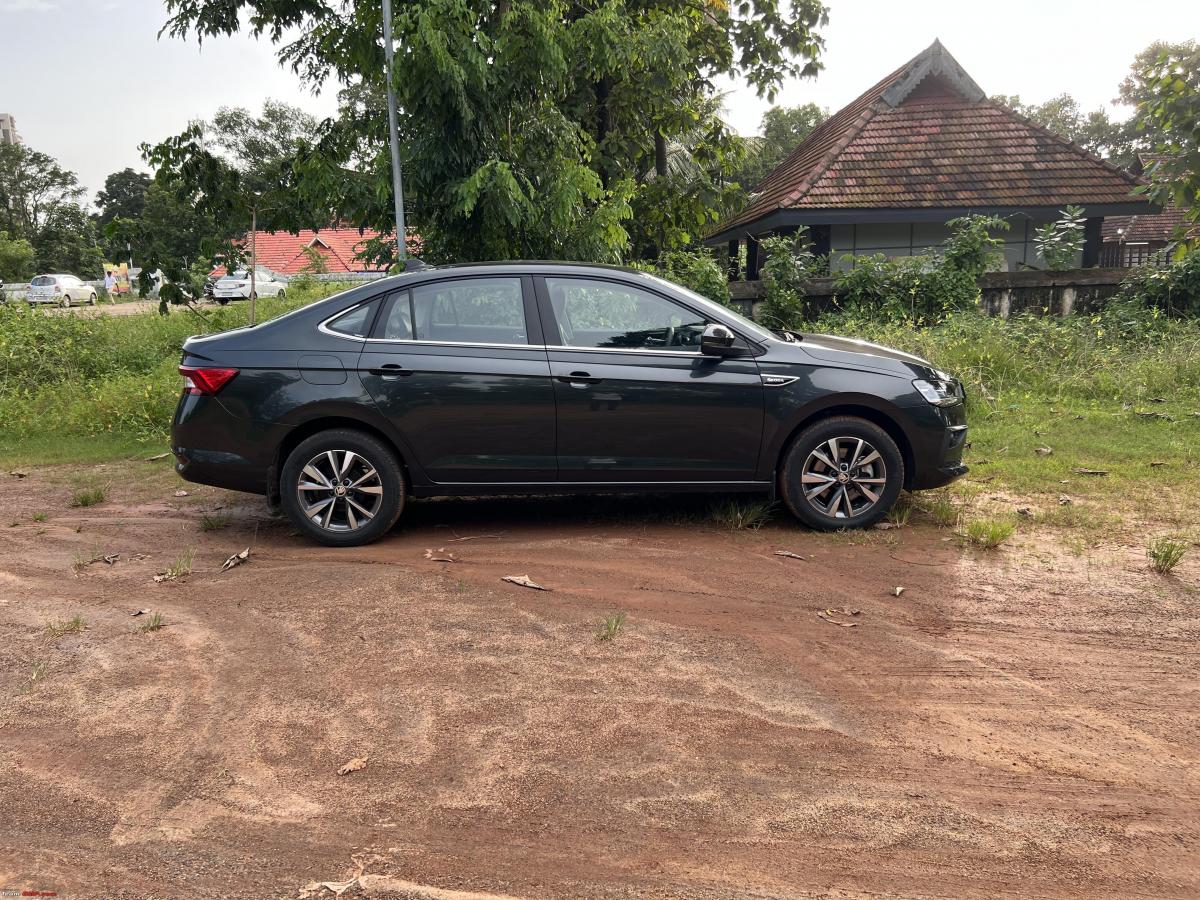
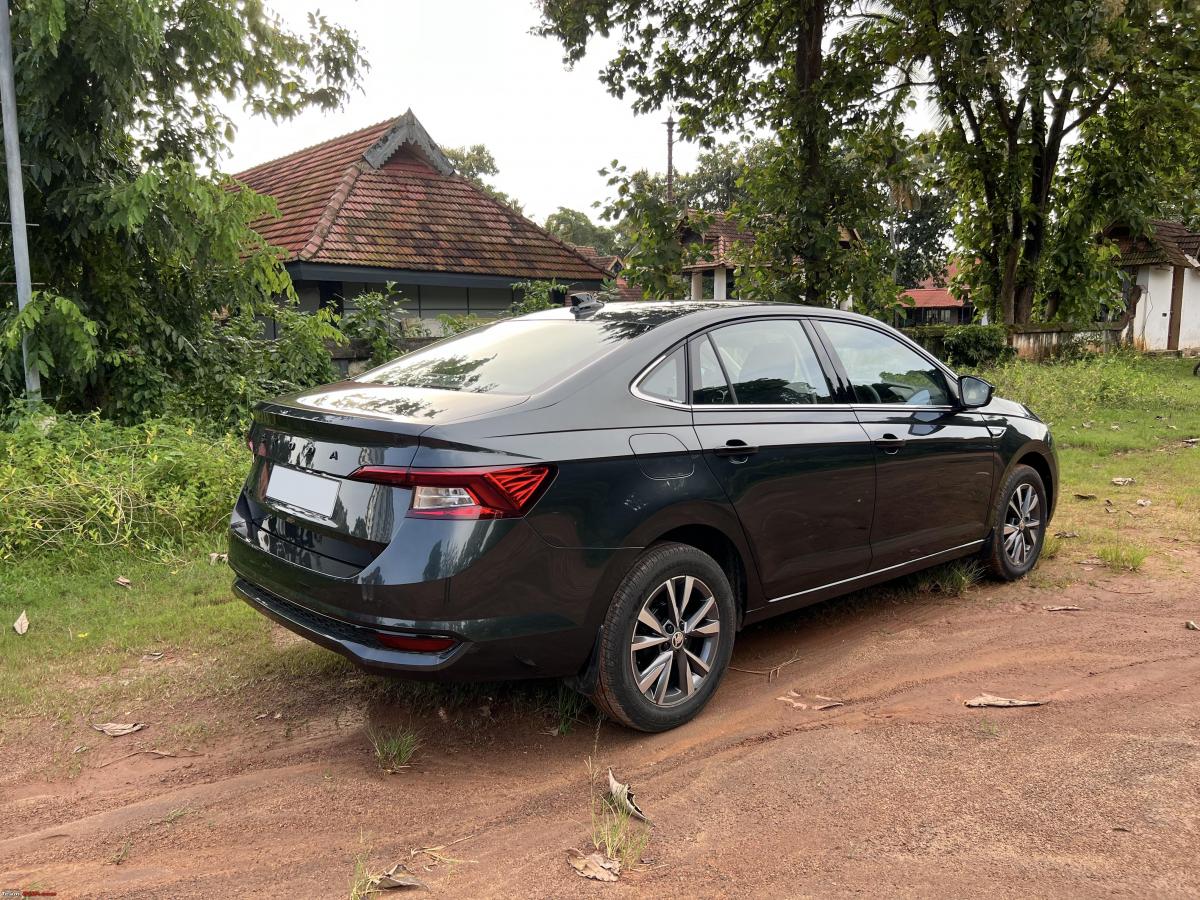
Here's what BHPian Vid6639 had to say on the matter:
Is that a wrap on the grill and window chrome strip or painted?
dragontailonfire replied:
Window chrome strip is untouched. Black paint for all the chrome in the front grill, the eyebrows above the fog lamps, the door handles, the rear strip above the reflectors and the rear badges (except the sides and front).
Check out BHPian comments for more insights and information.






